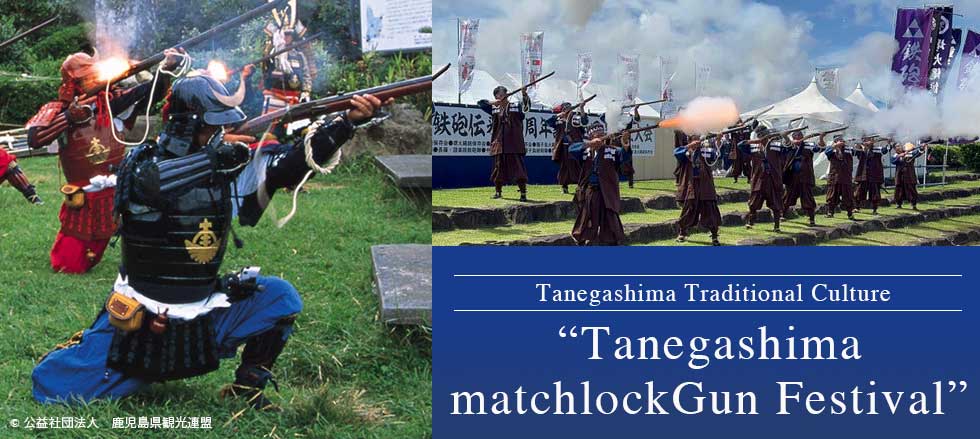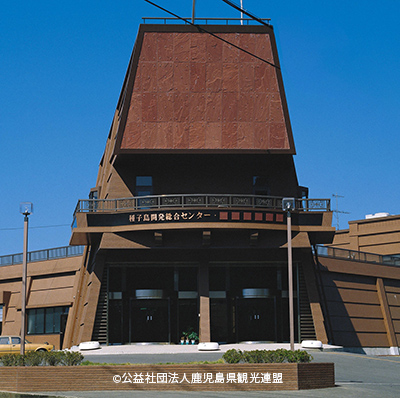Season Calendar
-歳時記-
種子島鉄砲祭り
(Tanegashima matchlock-Gun festival)

Matchlock guns that influenced Japanese history and the activities of preservation societies
There are more than 50 matchlock preservation societies across Japan,
and one of them is the Tanegashima Matchlock Preservation Society.
I'll let you know how it goes.
The ``matchlock gun'' was introduced by three Portuguese people who washed ashore on Tanegashima (present-day Tanegashima, Kagoshima Prefecture) in 1543 (Tenbun 12).
Tokitaka Tanegashima, an early adopter of the matchlock-Gun
Tokitaka Tanegashima, the 14th head of the Tanegashima clan,
was shown the guns by the Portuguese and was so impressed by their power that he purchased two guns for 2,000 ryo of gold.
It is said that Tokitaka Tanegashima ordered his vassals to learn how to mix gunpowder from the Portuguese, and he himself learned about shooting.
He also had a gunsmith, Yaita Kinbei, inspect it and succeeded in producing it.
Tachibanayama matasaburo,a merchant from Izumi-Sakai (present-day Sakai City, Osaka Prefecture),
and Tsuda Kenmotsu, a monk from Kishu (present-day Wakayama Prefecture),
used matchlock guns on Tanegashima. By learning manufacturing techniques and bringing them back to their hometowns,
Sakai and Kishu became major producers of matchlock guns.
The introduced matchlock gun was presented to the feudal lord,
Yoshihisa Shimazu. At the same time, the Shimazu clan was also informed of the method of preparing gunpowder for matchlock guns,
and the Shimazu clan was the first to introduce domestically produced matchlock guns into the battlefield.
Oda Nobunaga is the most famous for fighting with matchlock guns.
He devised the famous "three-stage attack" strategy. "Three-stage firing" is a tactic in which the gun squad is divided into three stages, and while the first row fires, the next row ignites, and the last row loads the bullets.
At the time, the Takeda army had a cavalry unit that was known to be the strongest, so as a countermeasure,
Oda Nobunaga built a horse stockade along the Renshi River and stationed 3,500 gunners inside it. It is. It is said that the Takeda army suffered over 10,000 casualties in this battle.
It showed that infantry tactics, mainly using firearms,
would replace cavalry as the mainstream fighting method in a new era.
Matchlock guns quickly spread to military commanders across the country and were used in actual battles.
The Shimazu clan also excelled in gun tactics, and it is said that the use of matchlock guns was a major factor in their ability to pacify Kyushu.
This year marks 480 years since guns were introduced to Tanegashima.
It was canceled due to Corona,
but
A ceremony commemorating the introduction of guns was held for the first time in four years.
Members of the Tanegashima Matchlock Preservation Society performed a test firing of matchlock guns.
Apparently Tanegashima and Sakai are the only places where test firings are carried out while marching through the city.
There are real and replica matchlock guns, and the Tanegashima Artillery Corps has a real matchlock gun.
Even though it is an empty bullet, the roar is powerful, and the sight of it being ``released'' is brave and worth seeing.

- In addition, the Tanegashima Development General Center "Teppo Kan" exhibits about 100 antique guns from Japan and abroad, including the first Portuguese gun and the first domestic gun.
We, Miyoko Kikaku, created the costumes for the Tanegashima Gun Corps.
If you are interested, please contact Miyako Kikaku for consultation and inquiries.

